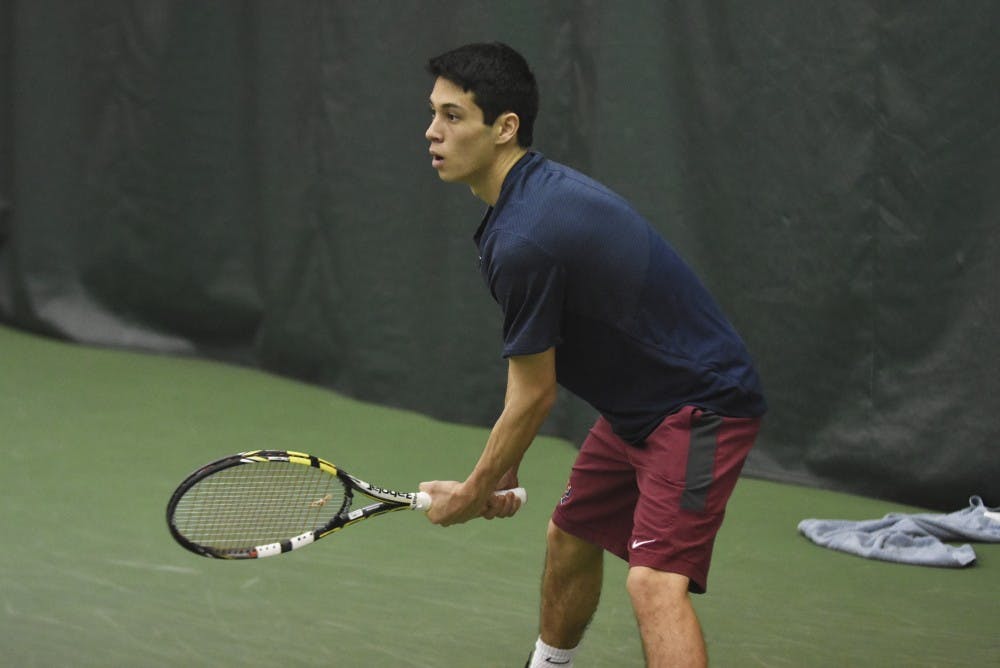
Freshman Max Cancilla is a regular in the Penn men's tennis singles lineup, and has to adjust to the college game on the fly.
Credit: Zach Sheldon78 by 36.
These are the dimensions, measured in feet, for a standard tennis court. The dimensions of the game never really change. The distance from the service line to the net will always be 21 feet. And the center net chord will always sit three-and-a-half feet above the court at the net posts.
But while the dimensions of the court are rigid, for Penn men’s tennis‘ newest members, the opening segment of their season hasn’t come without an adjustment period. Two of the Red and Blue’s freshmen, Max Cancilla and Kaden Funk, have had to learn the ropes of college tennis on the fly. The two have made regular appearances on coach David Geatz’s singles lineup, most recently posting a a pair of straight-sets wins in a match against Navy. And while the pair of freshmen have performed like veterans, they will both admit that college tennis is still a different version of the sport they grew up with.
“Throughout high school, the junior circuit is very much individual,” Funk said. “You are travelling by yourself, and you are training and going to fitness by yourself. Now you have that team aspect, and doing all those things with a team. It now shifts from an individual sport to a team sport.”
Funk, a Florida native, can simply look at the substance of the court as a marker of how different the college game is for him. The 19 year-old grew up playing on the Har-Tru clay courts commonly found at some of the top tennis academies in southern Florida. To him tennis in the indoor hardcourt season lends itself to a slightly different style of play.
“[In Florida,] there is a lot of slow play with balls with higher margins over the net and longer points,” Funk said. “Once you transition to college, the indoor courts make points a lot shorter and makes balls move a lot quicker because there are less elements taking away from the flight of the ball.”
Funk’s solution?
“Relentless dictation with margin.”
“Dictation” and “margin.” A hybrid style enforced into all of Geatz’s charges. Combining the aggressive mindset of a hardcourt player with the consistency of a clay courter. For Funk, the green clay courts of Florida have already taught him how to play with the margin. The task at college will be for him to use that margin to dictate the shorter rallies of the indoor courts.
For Cancilla and Funk, the greatest asset in making the transition to playing college tennis is relying on those who have experienced it before. Cancilla was particularly bashful in his praise of the influence that senior captain Matt Nardella has had on their development as Quakers.
“He’s really sort of been our idol,” the No. 4 singles player for Penn said. “He’s accepting of all players, whether you are the last guy on the team or the best guy. He makes you want to do well for the team.”
For these two freshmen, the opponents they face on the other side of the net are bigger, the points are more aggressive, and even the court surface has changed. Yet one change — the introduction of teammates to an otherwise individual sport — has balanced out all those other unknowns.
The Daily Pennsylvanian is an independent, student-run newspaper. Please consider making a donation to support the coverage that shapes the University. Your generosity ensures a future of strong journalism at Penn.
Donate






